
“We Can’t Say That”: Messaging that Prioritizes People Over Preferences
“Everyone on our team would agree with what you’ve written, but we can’t say that.”
As a copywriter working with mission-driven organizations, this type of feedback can be tough to navigate.
My first thought is typically something like, “If it’s right and everyone agrees, why not?”
Continuously exploring that question with clients reminds me that inspiring messaging isn’t just about accuracy. It’s about empathy, too.
Facing the reality that the words my team or a client most resonate with can alienate key audiences is a challenge. But working through that challenge is a team-wide lesson in empathetic listening.
People have preferences. That’s not a bad thing.
In 2022, the Lumina Foundation surveyed thousands of adults around the country about language used for racial equity and justice.
Lumina classified 38% of survey respondents as “informed skeptics,” people who consider “equity” and “justice” to be buzzwords. According to the survey, these folks tend to be politically conservative white men who make a middle income.
In 2024, the Philanthropy for Active Civic Engagement (PACE) conducted a similar survey exploring how language motivates voters. The PACE survey found that the most motivating terms were “community” and “unity.” The least motivating terms were “social justice” and “racial equity.”
Lots of organizations are targeting audiences that contain people similar to those captured by these surveys. If those organizations lead with words like “equity” and “justice,” their messaging might not have its intended impact.
That doesn’t mean that “equity” and “justice” are bad words.
It doesn’t mean that informed skeptics are bad people.
It means there has to be more than one way to say something inspiring.
We can find various ways to inspire by embracing the reality in front of us, even when that means setting aside our personal language preferences.
The right words are where everyone’s goals meet.
At Friday, we work with a cross-sectional group of changemakers, including higher education intermediaries, philanthropic foundations, credit unions, and K12 schools.
Each client has a combination of audiences. Every person within that audience has their own goals. That’s why saying the right thing can feel like an impossible task (especially when it comes to highly politicized words getting lots of media attention).
Getting the message right happens when organizations get curious about their audiences’ motivations and use that curiosity to be precise about how they can work together.
Building bridges
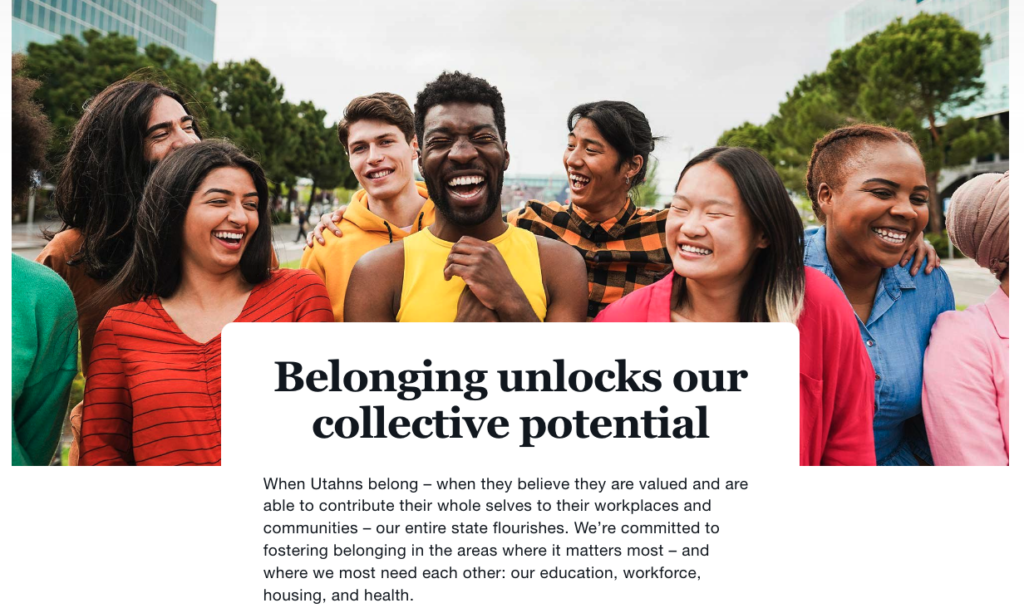
The Center for Economic Opportunity & Belonging, a recent client of Friday’s, works “to engage with communities and catalyze private, public, and philanthropic partnerships to remedy opportunity gaps in economic opportunity, education, health, and housing in Utah.”
Issues like racial equity and social justice are central to the Center’s work. To achieve their mission, the Center builds connections between many different types of people and organizations in Utah.
We could take a more deficit-based approach to tell their story, emphasizing Utah’s inequitable systems. We could also try to appeal to certain audiences’ pride, minimizing the problem to avoid causing discomfort.
After conducting stakeholder interviews, focus groups, and sending out a survey, we knew we had to find a better way. The Center’s messaging would need to appeal to informed skeptics as much as it appeals to frontline activists if crucial connections were to form and thrive.
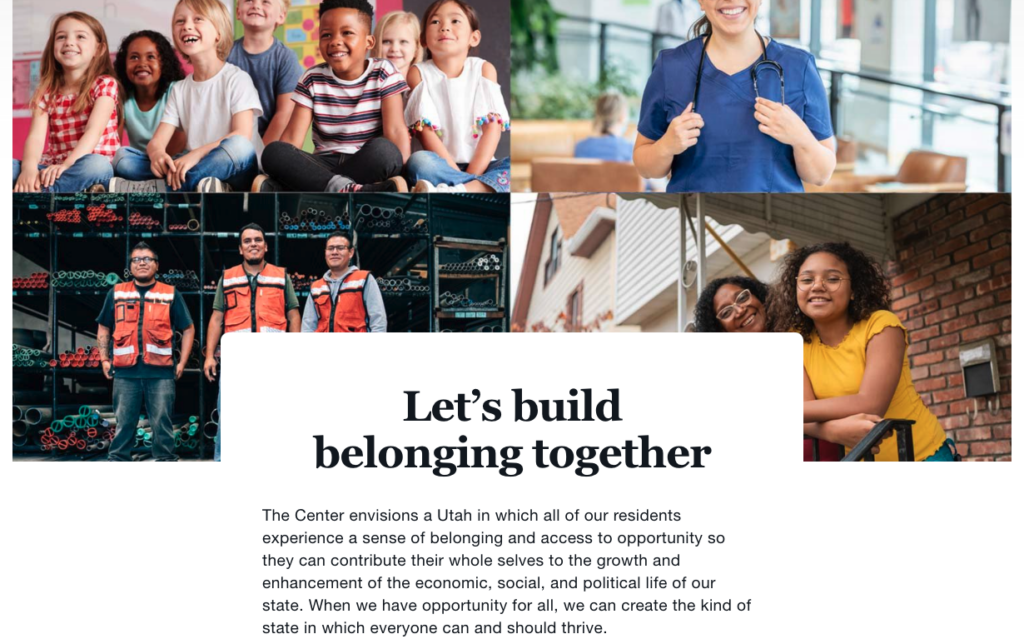
To strengthen the Center’s role as a bridge builder, we chose to build their messaging around the word belonging, an outcome all audiences wanted. We told a future-positive story that captured the best of what belonging does for our communities “in the areas that matter most – and where we most need each other.”
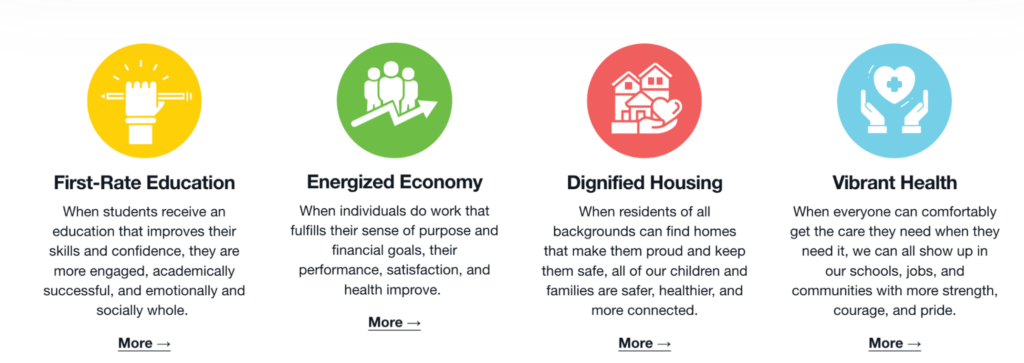
Honoring the Fight
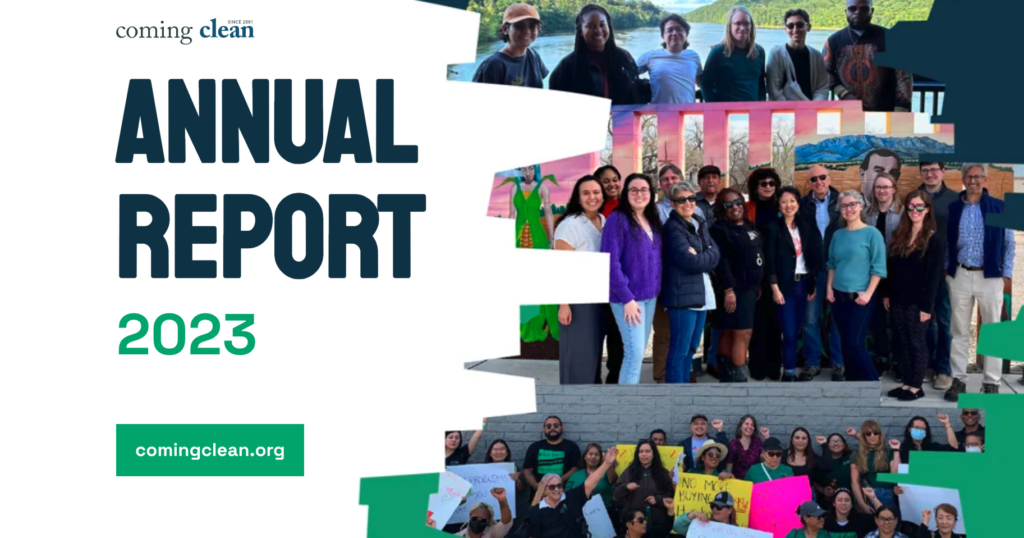
Like the Center, Coming Clean also works with a variety of audiences and facilitates connections between those groups. Unlike the Center, Coming Clean’s target audiences for their 2023 annual report were more united in their political motives, especially when it comes to environmental justice.
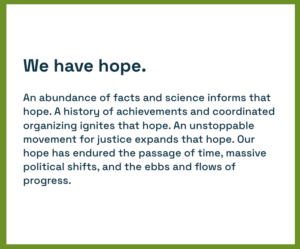
We wanted to use the annual report to encourage and honor this network of environmental justice organizers and advocates. We could have taken a more universally palatable storytelling approach that mitigated the intensity of their fight. But Coming Clean is so successful because they use their influence to elevate people who are often excluded from dominant systems of power.
To develop annual report messaging in line with that ethos, we emphasized the people most impacted by toxic chemical waste and those at the frontlines of advocacy. The report’s messaging spoke directly about real harm while celebrating shared hope and community-led progress.
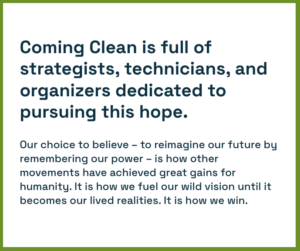
You can say it. You just have to say it right.
In some cases, fear is the driving force behind the decision to cut out or include certain language.
In the best cases, it’s the hundreds or thousands of hours a mission-driven team has spent connecting with people in their audiences who want to engage but won’t without a thoughtfully worded invitation.
Strong messaging begins with a curiosity-driven investigation into how an organization’s goals interact with its audiences.’
When organizations prioritize the people they want to reach, they can be much more confident that those people will listen to what they have to say.






